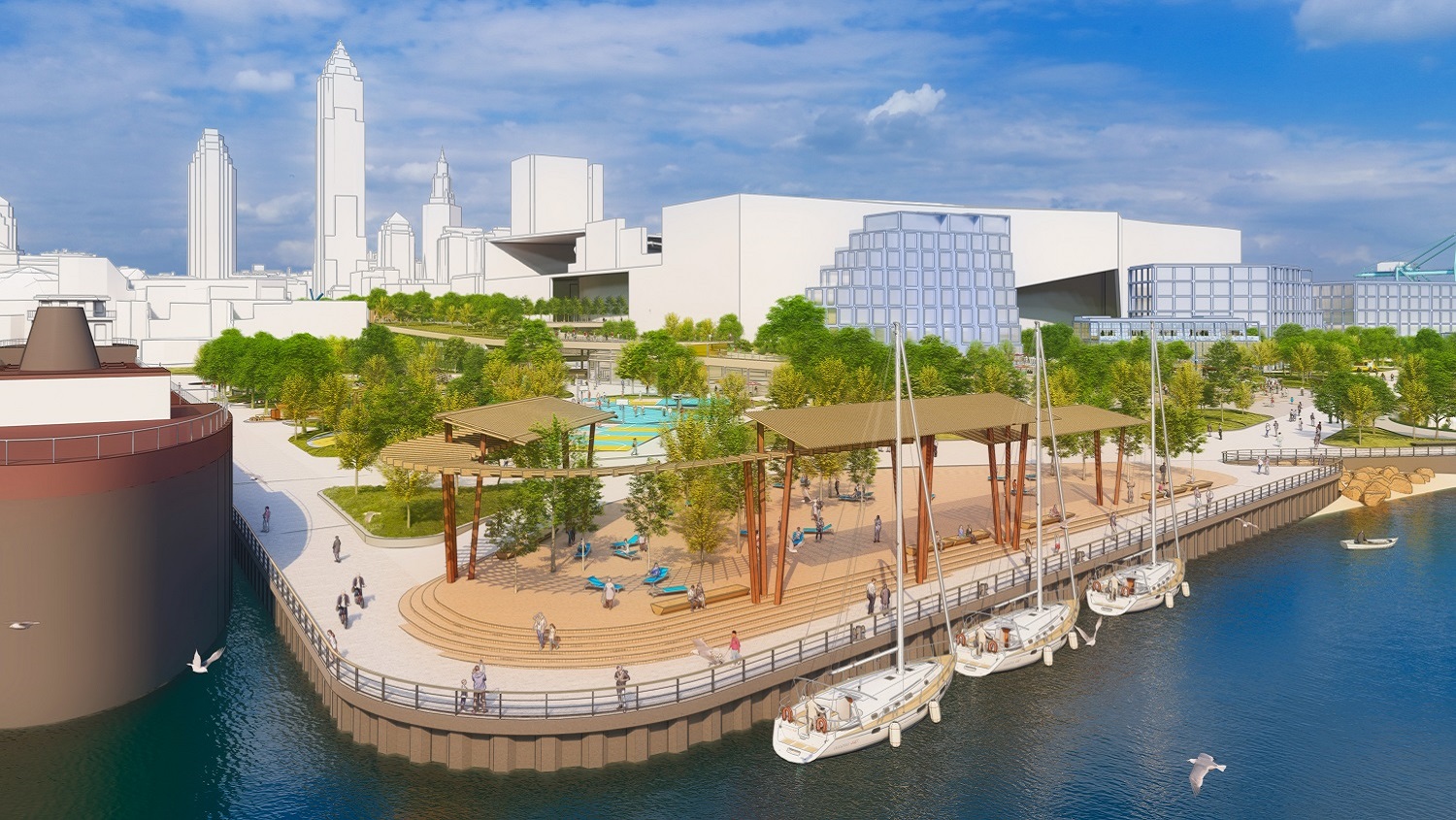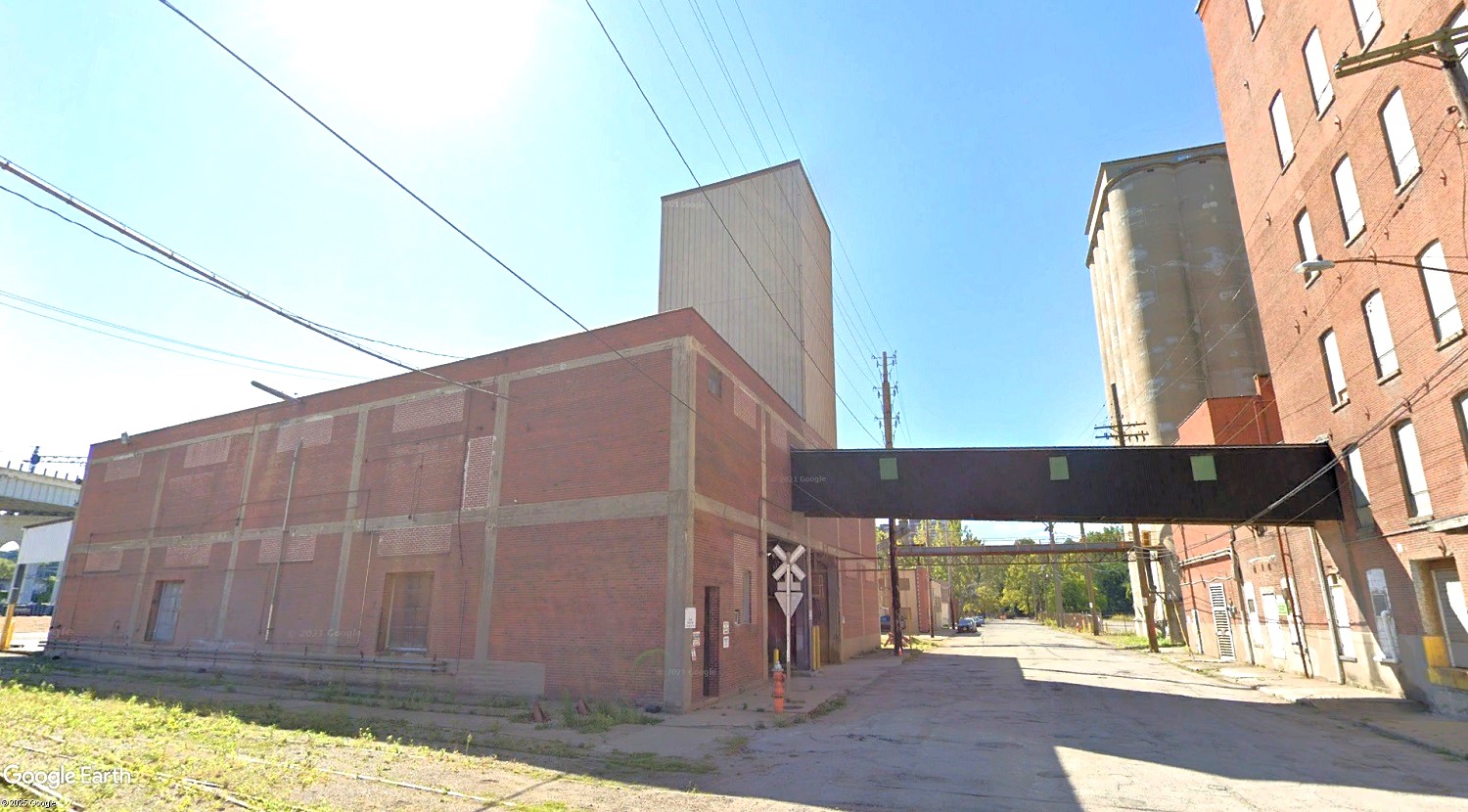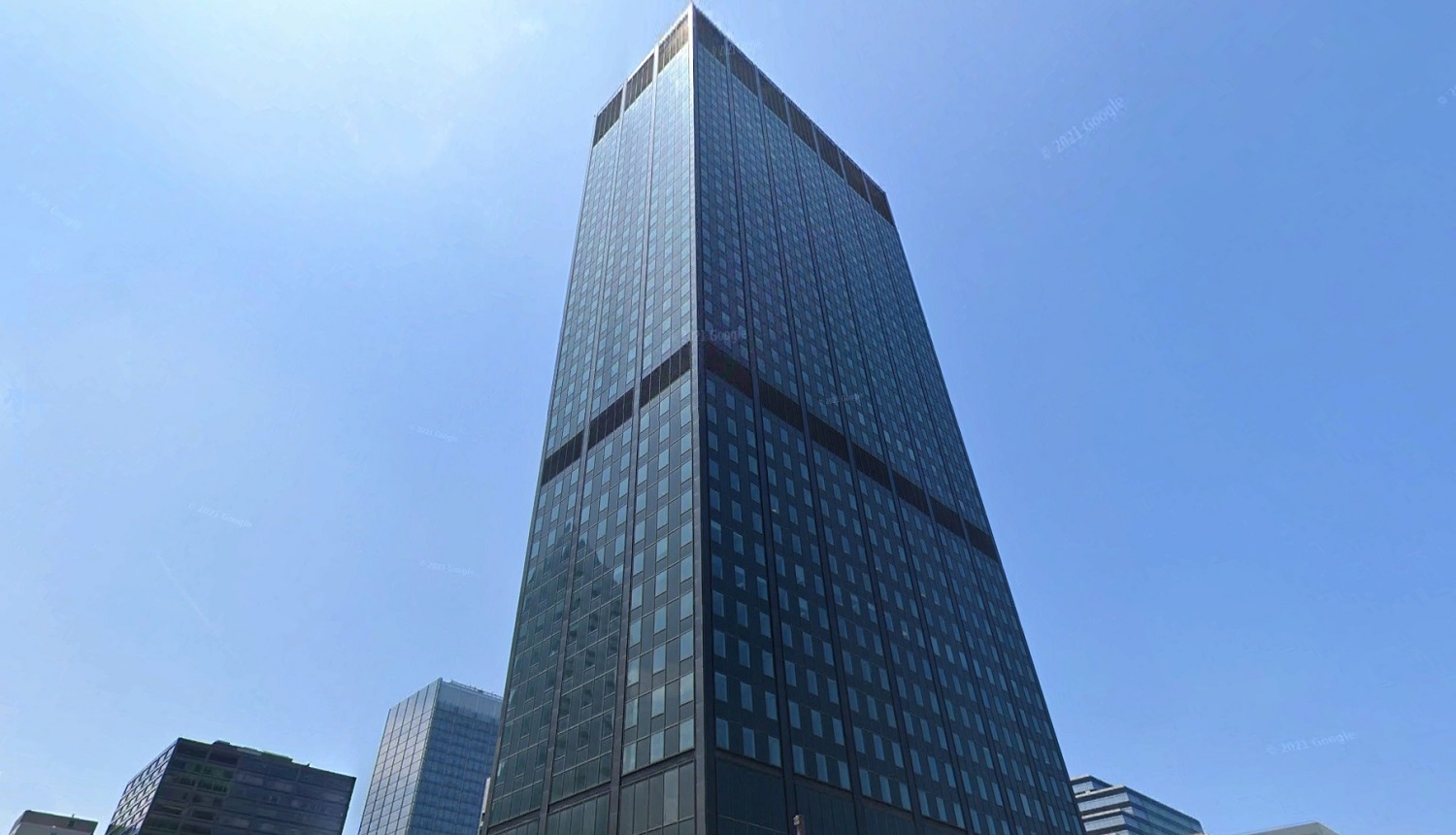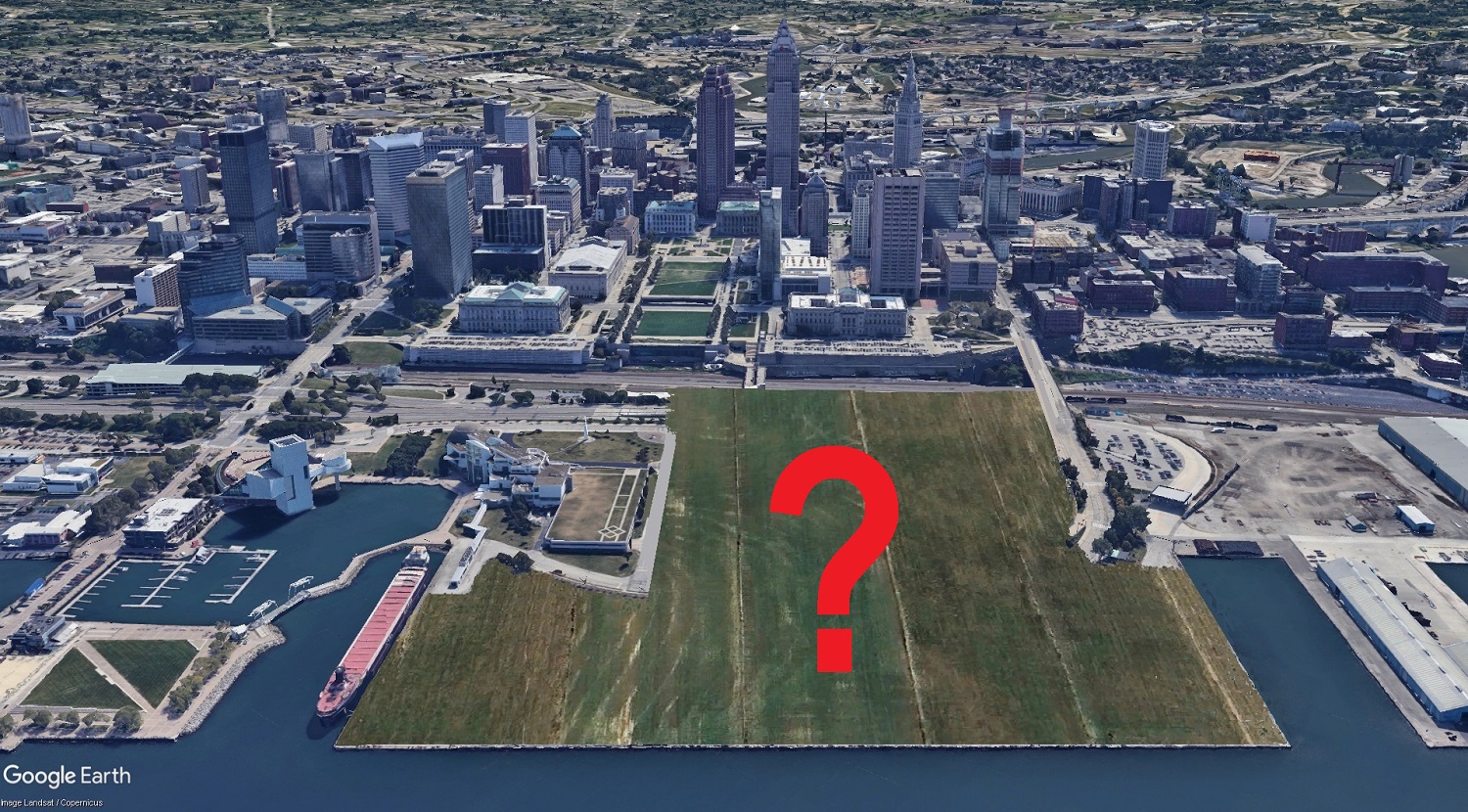After the Mall, What Comes Next for Cleveland's Suburbs?
Local shopping malls, once important for economic and social needs, are seeing different ideas and tax structures for a potentially new shopping future.
by Maura Zurick | Nov. 10, 2025 | 5:00 AM

Great Lakes Mall in Mentor, Ohio | PHOTOGRAPHED BY DANIEL LOZADA
Heather Catlett has been visiting Great Lakes Mall in Mentor for as long as she can remember. Now 40, she can trace the arc of her life through these corridors.
“From my standpoint, the mall is more than a building. It’s a long-standing staple of Mentor that’s been frequented by generations of my family,” Catlett says. “My grandparents and parents remember the old Higbee’s store and what it looked like back in the day. My grandma always took me to Hot Sam Pretzels for a pretzel and a Pepsi. We always parked outside Sears and entered through the South entrance.”
Her childhood milestones took place under the mall’s fluorescent lights: She got her ears pierced at Claire’s, begged her mom for fashion finds at Gadzooks and Spencer’s, and would dive into the huge piles of plush toys at the Disney Store. As a young adult, the mall remained woven into her life — her father brought her to Dillard’s to buy a suit for her first “big girl” job, and years later, she returned to the mall to pick out a dress for his funeral, using a Christmas gift card he had given her.
Today, Catlett continues the family tradition with her children. The mall is their go-to refuge on cold Northeast Ohio days.
“I love taking them to the mall, especially in the winter, where there’s not much to do with young kids to entertain them,” Catlett says. “I walked there and pushed them in a stroller when they were first born. Now my daughter loves Busy Bees, the trampoline, Build-A-Bear, and Villa Pizza. My son loves riding the train, the play area, going on the rides, and of course, the arcade.”
That magic is fading.
On a recent weekday, Catlett was struck by how empty the mall felt. The concourses, once-crowded, were now quiet enough to hear her own footfalls. Other than a few clusters of elderly mall walkers and the distant hum of pop music from the arcade, she says Great Lakes Mall looked like a ghost town. One clerk conceded that she hadn’t seen a customer all day.
Earlier this year, Great Lakes Mall’s owner, Washington Prime Group, filed for bankruptcy and announced plans to sell its remaining assets, including the Mentor property. That announcement has left city officials, longtime residents, and local business owners asking a difficult question: What happens when the mall disappears?
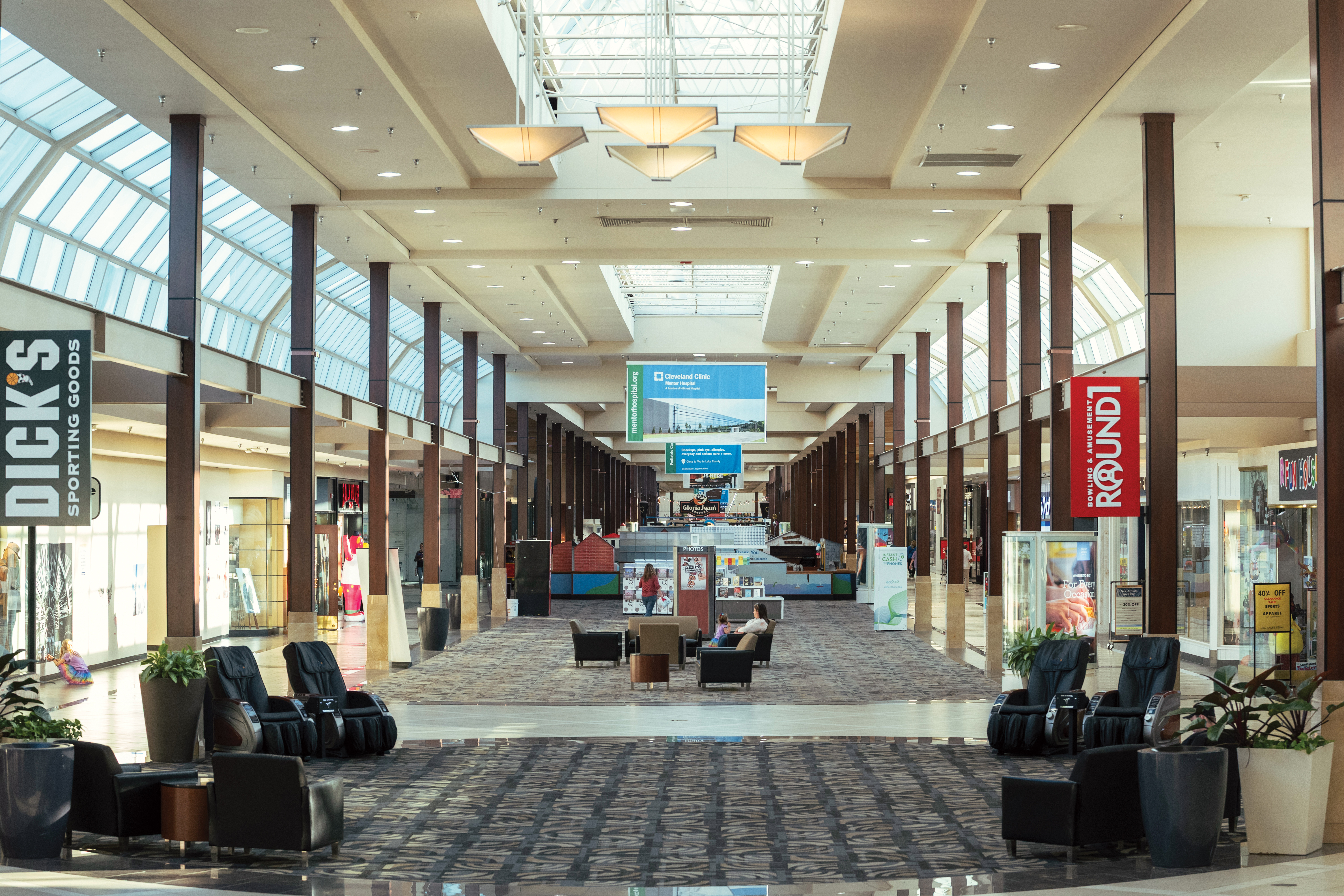
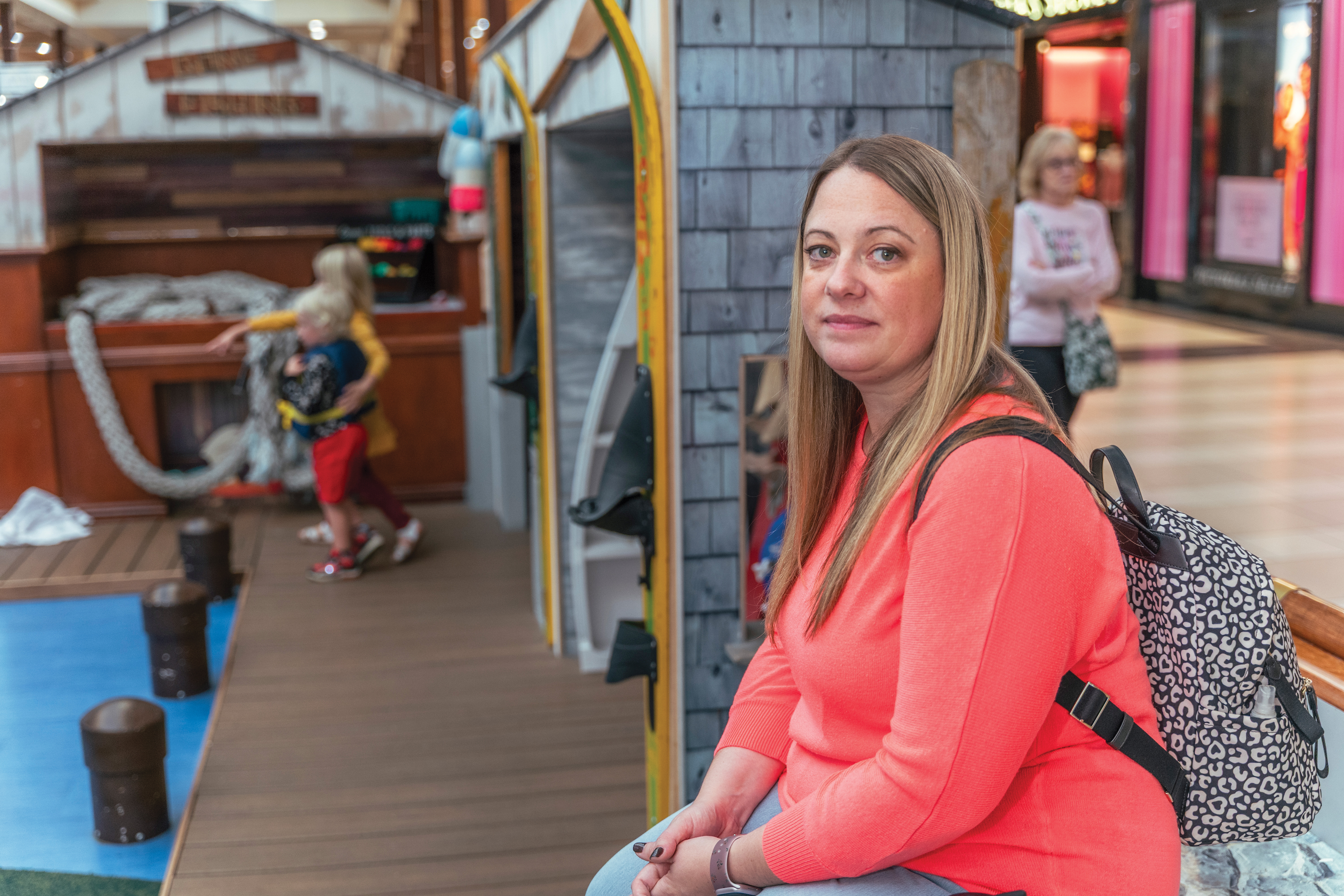
An Era in Decline
From the once-bustling Richmond Town Square to the still-thriving SouthPark Mall in Strongsville, these sprawling retail centers helped define the suburban landscape. But across the country, the traditional enclosed mall has become an endangered species. Some have been transformed into open-air “lifestyle” centers or mixed-use developments; others sit partially vacant, and many more have been demolished.
No new enclosed mall has been built in the U.S. since 2006, according to a 2022 PBS NewsHour report. Analysts predict around one-third of those still standing could close by 2030, according to a 2023 report by RTB House titled “The Future of Shopping Malls: An American Retail Evolution.”
In 1986, America had roughly 2,500 major shopping malls, but by 2022, only about 700 malls remained, according to Capital One Shopping’s 2025 Shopping Mall Closure Statistics report.
Mark Rosentraub, Ph.D., a professor of Sport Management at the University of Michigan and director of its Center for Sports Venues & Real Estate Development, previously served as professor and dean at the Maxine Goodman Levin College of Urban Affairs at Cleveland State University. During his tenure at CSU, Rosentraub became deeply familiar with the economic and urban planning challenges specific to Northeast Ohio, making him uniquely positioned to assess the changing landscape of retail malls in the region.
“The issue that Northeast Ohio is facing, every city is facing,” Rosentraub says. “It’s a little more complicated in Northeast Ohio because the population growth is, at best, modest, and at worst, contracting.”
Because of these demographic pressures, Rosentraub says, communities across the region — and the country — must find innovative ways to repurpose sprawling retail spaces like Great Lakes Mall.
“Several communities have come up with good ideas, and others still struggle,” Rosentraub says. He explains that successfully redeveloping a mall often hinges on aligning a community’s unique needs and aspirations with market-driven opportunities.
Redevelopment efforts differ widely based on local priorities and economic realities. Some communities, Rosentraub says, have opted to convert former retail centers into massive warehouse facilities, often occupied by e-commerce giants like Amazon. While warehouses bring valuable employment opportunities, they don’t necessarily replace the vibrant social and interactive environment malls once offered.
“It creates jobs, but it doesn’t create a lot of excitement around the facility,” Rosentraub explains. “These were places where lots of people used to go and interact. You put a warehouse there, and there’s not a lot of interaction at all.”

The Stakes for Cities
This isn’t just a story about retail nostalgia or outdated department stores. Malls like Great Lakes have long played a crucial role in the communities around them. They generate significant property and income taxes, provide accessible jobs across all age groups and education levels, and offer gathering spaces for everything from blood drives to high school performances. When malls falter, the consequences ripple far beyond empty food courts. The impact is economic, cultural and, sometimes, deeply personal.
City officials say those financial realities make it essential to plan carefully for the future, not just to protect tax revenue but to preserve the community’s long-term vitality.
Kevin Malecek, Mentor’s director of economic development, says that kind of planning reflects the city’s broader commitment to keeping the area active and relevant, not by clinging to the past but by adapting to what residents and businesses need now and in the years ahead.
For decades, Great Lakes Mall wasn’t just the commercial heart of Lake County — it was a pillar of Mentor’s civic life.
“Great Lakes Mall has been the city’s most important retail hub since its inception in the early 1960s,” says Malecek. “As an Ohio municipality, the city receives nearly 70% of its revenue through municipal income tax, so the hundreds of jobs that are located at establishments either at stores within or in the immediate vicinity of the Great Lakes Mall are vitally paramount to the health of the Mentor economy and the city’s ability to provide high-level services to its residents.”
Malecek emphasizes the importance of proactive planning.
“Given that the Great Lakes Mall site is
actually owned by several separate entities, we have to be open to conversation with several entities at once in terms of future plans,” he says.
Rezoning tools have already been implemented by the city, allowing for new development types that could integrate retail with housing, hospitality and healthcare. Mixed-use development is now permitted through the city’s Planned Unit Overlay Districts, with industrial and self-storage uses explicitly excluded.
The city has also made infrastructure investments in the area, including purchasing the former Sears Auto Center to construct a new fire station. Dick’s Sporting Goods purchased the former Macy’s store and plans to turn it into a Dick’s House of Sport, a next‑generation retail concept launched in 2021 that transforms a traditional sporting goods store into a community‑driven athletic destination. Rather than simply offering merchandise, these locations include immersive, experience-based amenities and events.
“As there have been recent developments in terms of investment, the city continues to be committed to working with all of the parties involved to ensure the future of the Great Lakes Mall area will be a vibrant hub of economic activity for the city — and the region around it,” Malecek says. “The Great Lakes Mall has adapted to consumer tastes over the years, and we’re confident that if and when a new owner is identified, the property will be reimagined in a way that benefits our community, whether it might be a shopping mall or some other proper use.”

Reinvention in Action
While Great Lakes Mall’s future is uncertain, other malls in Northeast Ohio are adapting and thriving.
SouthPark Mall in Strongsville, owned by Spinoso Real Estate Group and Kize Capital, has embraced reinvention. Since acquiring the mall in 2021, Spinoso has leased more than 100,000 square feet to national brands like JD Sports, Boot Barn and Activate Games. The mall has also seen growth in dining and entertainment, with popular additions like Hooley House, KPOT Korean BBQ and Lao Sze Chuan.
Behind the scenes, Spinoso has invested over $1 million in infrastructure repairs and upgrades. The company has committed to turning SouthPark into more than a shopping center. A packed calendar of more than 100 events each year — from health expos to cultural festivals — has helped reposition the mall as a community destination.
“SouthPark Mall remains one of the most dominant and vibrant retail destinations in Northeast Ohio,” says CEO Carmen Spinoso. “As the region’s largest retail campus, it continues to draw strong tenant demand, consistent foot traffic and sustained leasing activity and growth.”
The company also worked with the city to expand zoning for future mixed-use additions, allowing for new amenities like hotels, theaters or grocery stores, if needed.
“The future of enclosed malls hinges on reinvention and community connection,” Spinoso says. “SouthPark is a great example of what’s possible: a highly curated, diverse and vibrant community-centric property that blends retail, dining, entertainment and events.”
On Cleveland’s East Side, the former Richmond Town Square mall in Richmond Heights was once as bustling as Great Lakes. By the 2010s, however, Richmond Town Square had dwindled to a shell of its former self — and when its last anchors, Macy’s and Sears, went dark, the property slipped into disrepair.
Rather than attempt a retail revival, the developers and the city opted for a dramatic transformation. In 2023, the dead mall was razed to make way for Belle Oaks Marketplace, a $250 million mixed-use village rising on the same site.
The plans for Belle Oaks include nearly 800 high-end apartments and over 300,000 square feet of retail and restaurant space, along with parks, trails and civic amenities.
Phase I of the project — 487 apartments and 17,000 square feet of retail — is already underway, with Phase II set to add another 312 residences and more than 200,000 square feet of commercial development to the space.
“We started with the former Macy’s building in 2017, which we converted into self-storage,” says Sterling McGregor, president and co-founder of DealPoint Merrill, the firm behind Belle Oaks. “Then we acquired the Sears site and began working with the city to rezone the land for residential use.”
The economic headwinds of recent years — rising interest rates, tighter lending — have posed challenges, McGregor says, but the overall vision for Belle Oaks remains.
“These apartments are designed to feel like homes, with large floor plans, high ceilings, HEPA filtration and concierge services,” he says. “We’re creating a live-work-play environment with walkability and wellness in mind.”
There are also plans for a nature trail across the street that could connect to nearby Cleveland Metroparks systems.
“The mall’s gone, so this is just a completely different scenario,” McGregor says. “It’s a way to bring health, green space and activity into the space.”
He believes this model is replicable across the country.
“Many communities are grappling with abandoned malls,” he says. “They’re just not attracting people anymore for a lot of reasons — the internet, Amazon, the choice of watching movies at home and home delivery. There are just so many ways that keep people in their homes that weren’t the case in the past.”
Rosentraub points to developments like Crocker Park in Westlake and Legacy Village in Lyndhurst as examples of malls successfully evolving to meet changing consumer preferences. Unlike traditional enclosed malls, these centers blend retail spaces with restaurants, play areas and communal gathering spots, creating vibrant hubs that mimic traditional downtown settings.
“They have incorporated malls with a lot of experiential things like restaurants and play areas,” Rosentraub says. “They’re trying to create them more as town centers rather than just retail centers. Crocker and Legacy were building what I call a ‘faux downtown.’ There’s an essential element that attracts people, sometimes a fountain space or a skating rink, and then around it is different experiential retail.”
This blend of experiences and retail resonates strongly with modern consumers, he notes, because it taps into a desire for a sense of community and engagement, something traditional enclosed malls increasingly struggle to provide.
“People like the feeling of the downtown, the walkable downtown in a very safe environment,” Rosentraub adds.
Yet, even these vibrant centers aren’t immune to broader retail transformations driven by evolving consumer habits. Rosentraub emphasizes that the growth of online shopping, accelerated by the COVID-19 pandemic, continues to reshape how retailers operate and the kinds of spaces they seek.
“If you looked at the data on online sales, it’s rising at about a 30-degree angle going up,” Rosentraub says.
Despite these dramatic changes in retail, Rosentraub emphasizes that such shifts in land use are not unprecedented.
Throughout history, urban spaces have continuously evolved to meet new demands, adapting to shifting economic and social needs.
“Land use always changes,” he says. “When the mall closes, it’s not like the land is going to lie fallow for decades. Mentor is a good location. It needs a different asset. I don’t know what that asset is because I haven’t studied it yet, but something new will emerge.”
Rosentraub acknowledges that while such changes make sense economically, they inevitably evoke strong emotional reactions from community members. He likens the nostalgia surrounding malls to the emotions experienced when a family home is sold.
“It’s the right thing to do economically, but there’s that emotion tied to it,” Rosentraub says. “You may not personally like what the land use is going to be, but that’s what market forces do. They can’t sustain themselves.”

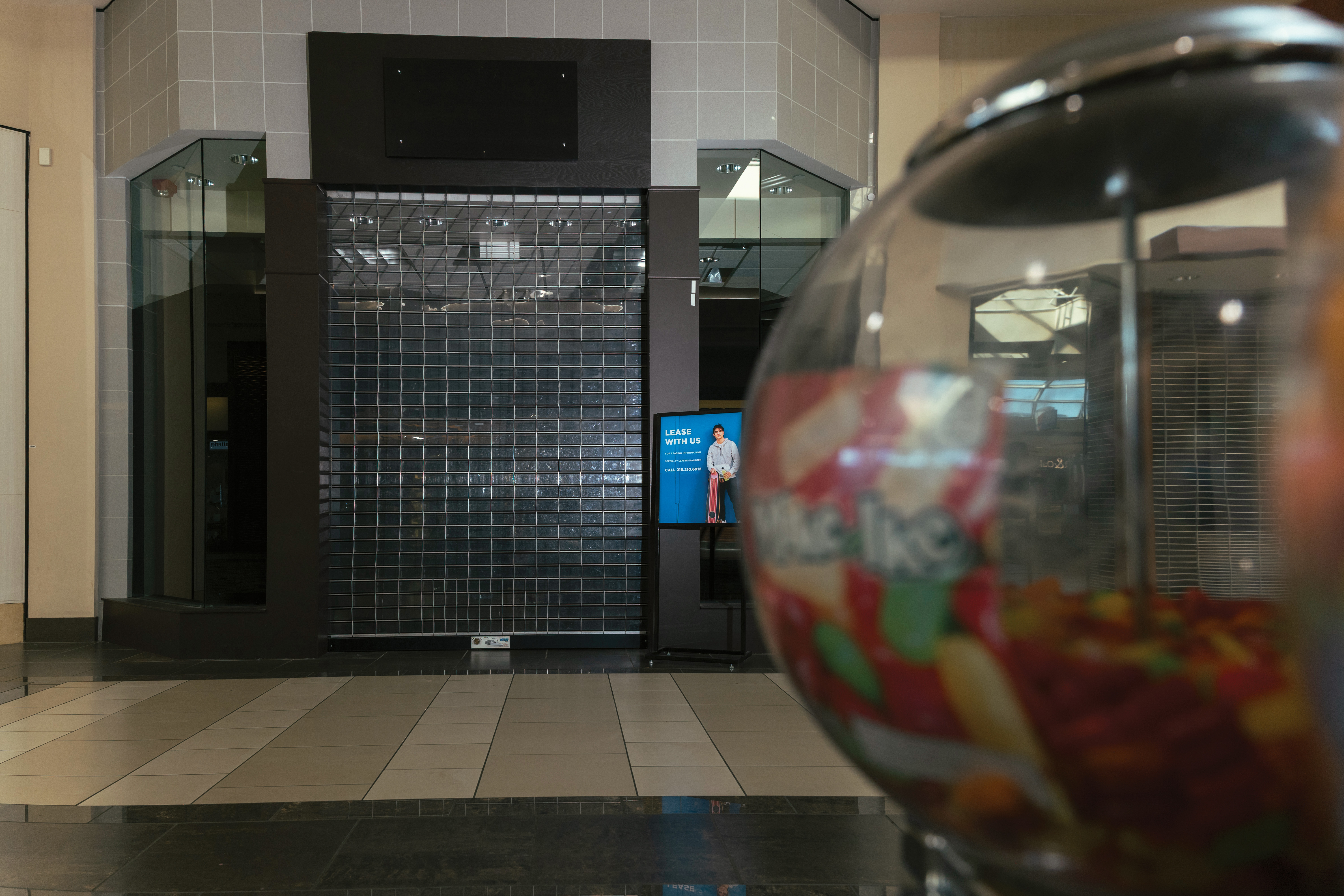
Business as Unusual
Amid ongoing uncertainty at Great Lakes Mall, some small businesses have found opportunity.
Sarah Benedum and Stefany Belt opened Oliver’s Emporium inside the mall in late 2023. The boutique is home to 28 local vendors — including vintage dealers, artists and crafters — many of whom used to sell exclusively at pop-up markets.
“We first came last holiday season to provide our customers with a temporary-permanent space to find us for the holidays. Many of us are fair, festival and craft show vendors,” says Benedum, the brand’s former co-owner. “Sometimes our customers have to chase us down. Many of our exhibitors had a successful holiday season and requested the option to be here permanently.”
Oliver’s reopened in March.
She says the mall provides advantages that newer retail formats don’t.
“As a new business, it’s hard to gain footing and a draw,” Benedum says. “We have the advantage of being in the path of anyone who is already here. We also have a nice community of business owners and operators. We have the opportunity to support each other in ways we wouldn’t be able to if we were isolated.”
Still, she’s aware of the bigger picture, noting that she only knows what the public knows right now: that the mall is for sale. Despite the uncertainty, Benedum says their experience has been positive.
“There are very few people in this and even in surrounding communities who aren’t familiar with Great Lakes Mall,” she says. “It’s a local landmark. It’s still thriving. And we are grateful to be a part of it. We’ve been blessed to have positive experiences here and look forward to continuing to do so.”
While Benedum and other small vendors see promise in the foot traffic and community the mall still provides, their stories are part of a larger picture. Shopping centers like Great Lakes Mall don’t just serve as retail hubs; they play a significant role in local economies, jobs and city planning.
Beyond sales tax and foot traffic, shopping malls are also crucial job creators. According to a 2017 report from the International Council of Shopping Centers, shopping centers directly employed one in eight workers in the U.S., accounting for more than 12.5 million jobs nationwide. These jobs include not only retail workers, but also maintenance crews, mall security, management staff, marketing professionals and small kiosk operators. In Ohio, shopping centers supported more than 930,000 jobs and contributed over $27
billion in economic activity, according to the same report.
Great Lakes Mall’s owner and operator, Washington Prime Group, declined to answer questions or provide foot traffic and vacancy data for this article.
Instead, the company issued the following statement: “Like any dynamic retail environment, we do have some available spaces. We view these as exciting opportunities to evolve our tenant mix and introduce fresh, engaging retailers and offerings that will enhance the experience for our guests.”
Mentor city officials noted that they do not maintain retail vacancy data specific to Great Lakes Mall but provided citywide statistics: According to recent data from CoStar, about 7.2% of Mentor’s total retail space is currently vacant, marking an increase of 0.5% from the first quarter of 2025 and up 1% from the adjusted vacancy rate reported in the second quarter of 2024. The city’s largest available retail spaces include areas near the mall but not within the mall property itself: 7721-7723 Mentor Ave., with 64,500 square feet; 7960-8000 Plaza Blvd. offering 41,264 square feet; and 7797-7885 Mentor Ave. with 24,282 square feet.
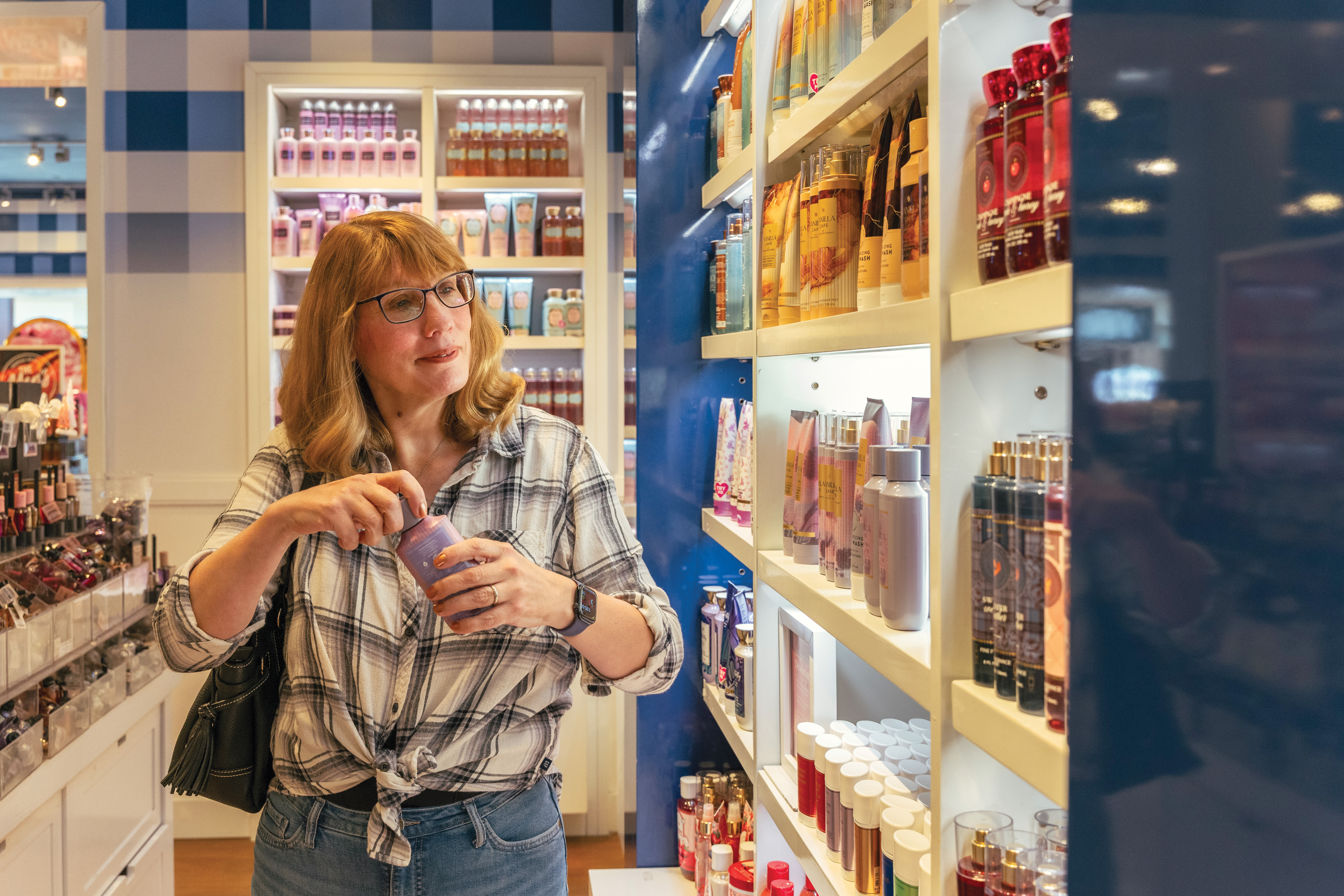

What Comes Next?
Back in Mentor, residents are watching and waiting.
“There still exists a great deal of nostalgia for the Great Lakes Mall and for the stores the Mall housed in the past,” Malecek says. “While the shopping habits of Mentor residents have evolved, many still value going to a location like Great Lakes Mall to shop, play and socialize.”
Catlett has faith that the mall can survive.
“I really hope the mall stays a mall,” Catlett says. “It can evolve and thrive. Look at some of the malls on the West Side as an example. Keep the rent low so tenants can stay, do things to attract people, add businesses to attract families.”
Emily Elizabeth Yerick, 40, spent much of her late teens working and socializing at the mall. She juggled shifts at Spencer’s and the Sunglass Hut kiosk, and still came in on her days off just to hang out.
“The mall friendships were amazing,” Yerick says. “I remember one friend in particular that I met working at Spencer’s, and when I worked at the Sunglass Hut, we’d have a notebook we’d write to each other in. She’d hang out at the store door, and I’d run from my kiosk, and we’d pass the notebook back and forth. Sometimes we’d have security guards pass it between us; it was so fun.”
She worked at the mall back when stores played Muzak from themed CDs, and Tuesdays meant disco. Her shop did inventory that day, so the staff danced their way through the shift, blasting “Funkytown” while friends from other stores dropped by, already knowing it was inventory day just by the music and energy. Even on days off, mall employees would come back just to hang out, Yerick says.
Back then, the mall was more than a destination; it was a reflection of youth culture.
“I’m torn between nostalgia and sadness at the mall now,” Yerick says. “My daughter loves going, and it just doesn’t feel like there’s a lot there for her, not for tweens, not for teens. It’s geared at an older crowd who maybe still shops in person as opposed to ordering things on the TikTok shop, and there are so many vacancies it can feel like a ghost town.”
Yerick hopes her daughter gets the same experience she had.
“The mall was never just about shopping,” she says. “It was about growing up, making friends, feeling seen. I want the next generation to have a place like that, too.”
Bonnie Diczhazy, 55, of Mentor-on-the-Lake, has been going to the Great Lakes Mall since she was a child.
“My mom used to take me to the mall when I was in grade school for shopping trips,” Diczhazy says. “We’d go to Sears, Winkleman’s, JJ Newbury’s and eat lunch at Roy Rogers. I remember it being such a treat to get fries and a hamburger at a Western restaurant. I was truly in awe of the sights, sounds and smells in the mall. My mother actually worked at the Village Dairy in 1962 when the mall was an open-air plaza.”
She spent her teenage years hanging out and shopping for new records and band pins.
When her daughter was young, Diczhazy would walk the mall with a stroller, stopping at Bath & Body Works and Macy’s with her mother. Every year, her family would get pictures with Santa and the Easter Bunny and attend the Kids Fest.
“For me, the mall was a getaway,” Diczhazy says. “A place to relax, unwind and browse. Even if we didn’t buy, we’d enjoy the day. For a busy mom, sitting with a beverage and people watching was a true vacation.”
Today, Diczhazy still visits several times a week as the creator behind the YouTube channel “Queen of the Girl Geeks,” where she reviews products as a 50-plus lifestyle vlogger and writer. She still enjoys shopping at iconic mall stores like Bath & Body Works and Victoria’s Secret.
“The loss of community is real for me,” Diczhazy says. “In the heyday of department stores, it was an event to go Downtown to Higbee’s and the May Co. For my generation, the mall was our place to gather, hang out, socialize and just be teens. When places like malls close, we often don’t realize the impact for years. Nostalgia comes with age.”
For more updates about Cleveland, sign up for our Cleveland Magazine Daily newsletter, delivered to your inbox six times a week.
Cleveland Magazine is also available in print, publishing 12 times a year with immersive features, helpful guides and beautiful photography and design.
Trending
-
1
-
2
-
3
-
4
-
5


